Our Favourite Christmas Markets in Germany
Sit back and enjoy as Wanderers-in-Residence Dan and Audrey take you on a road trip through the Christmas markets in Germany. There will be mulled wine, old town streets and sauerkraut. What more could you need?
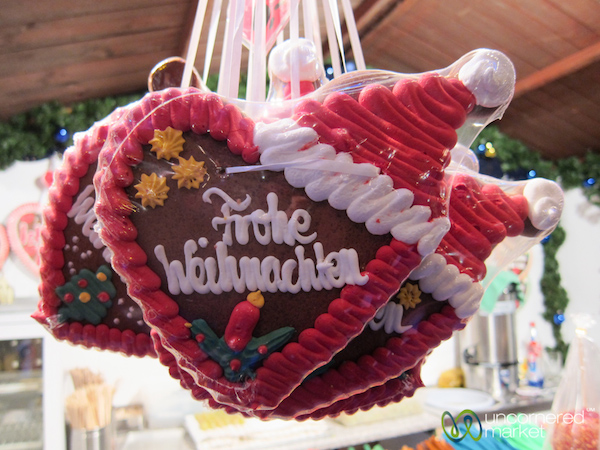
As the days get shorter and temperatures dip in Germany, there’s something that everyone looks forward to: Christmas markets (Weihnachtsmarkt). To us, German Christmas markets are less about shopping for the holidays, and more about serving an important social function during the cold, dark winter weeks leading up to Christmas. Friends and family make plans to meet at the market after work or on weekends. Over steaming mugs of glühwein (spiced wine) and hearty street food like bratwurst, they catch up on all that’s going on in life and what’s to come in the next year.
And everywhere you go – from Germany’s largest cities to its small towns – you will find a Christmas market. They have a long tradition in Germany, with some of the oldest markets dating back almost 700 years.
Last year we took a road trip around southern Germany with the goal of visiting as many Christmas markets as we possibly could in a short time. Here is a round-up of some of our favorite ones, with a special emphasis on those in smaller towns that are perhaps a little less known, but are more community-oriented and feature a local feel.
Little known German Christmas markets
Esslingen
Located just outside of the city of Stuttgart, the Esslingen Christmas market takes over the town streets and offers a medieval slant. Not only are all market stands built and decorated in a Middle Ages motif, but all vendors are dressed in medieval garb and take on roles from that time period. Note: beware of the jester making fun of you and try to avoid the public bathtub.
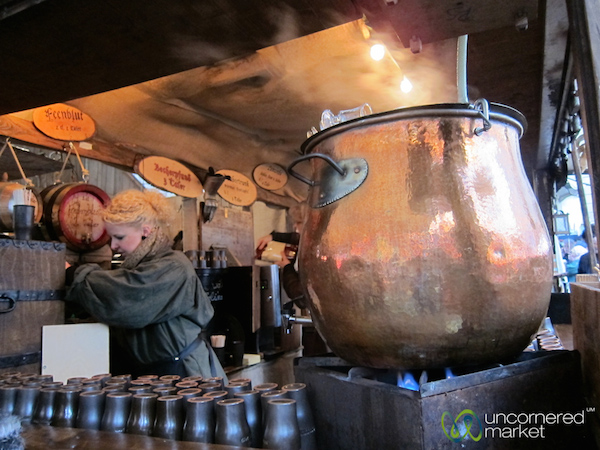
In addition to large vats of steaming glühwein you’ll also find stands serving up large portions of Swabian food favorites like spaetzle (German homemade noodles mixed with cheese or sauerkraut), maultaschen (large ravioli, either steamed or fried), and schupfnudeln (small potato gnocchi, usually mixed with sauerkraut). These hearty foods are the perfect match for cold weather.

Tübingen
Tübingen is the quintessential university town with the added benefit of a beautiful medieval old town, all accessible by an easy train ride from Stuttgart. You have to do a bit of planning for the Tübingen Christmas market as it only takes place on the third weekend of advent.

The narrow old town streets and main square are taken over by stalls of every variety, from high school sports teams raising money by selling bratwurst, to local craftsman selling handmade wooden decorations. What appeals to us about this market is that it still feels very local and remarkably social. It’s easy to meet people not only from the town, but also from the surrounding areas, all who come to the market each year.

Ludwigsburg
About 12km (7.5 mi.) north of the city of Stuttgart is the small, Baroque town of Ludwigsburg. Its small Christmas market takes over the main square and a few streets around, making it manageable enough to enjoy and experience all of it in a couple of hours, say on a lunchtime stop as we did, or for a mid-afternoon snack break. Many of the stands sell local food specialties and crafts, making it a great place to pick up homemade gifts.
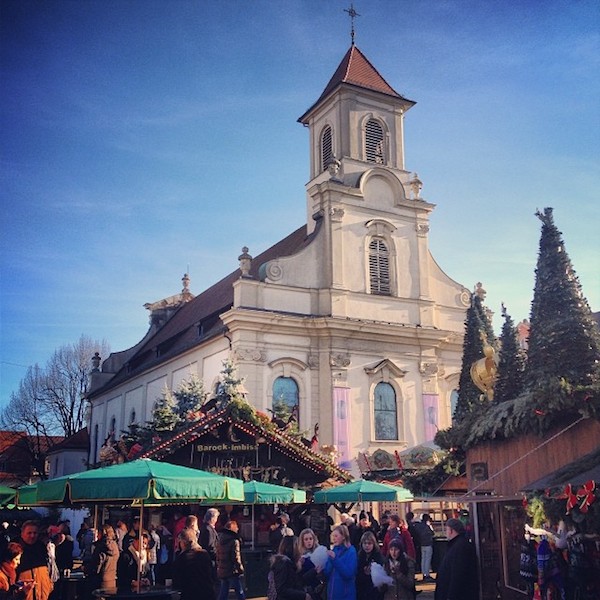
Augsburg
The Augsburg Christmas market was not initially on our intended first draft itinerary, but when we found ourselves with little additional time en route to Munich, we said “Why not?” and decided to stop by. Augsburg turned out, in fact, to be one of our favorite markets of the entire trip.
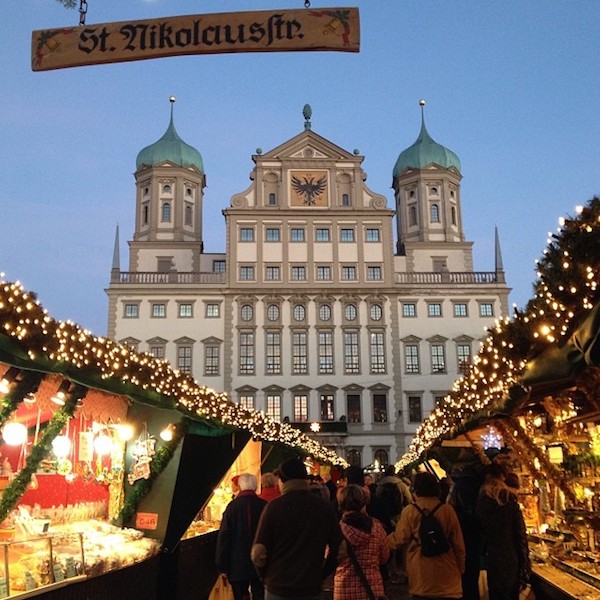
Although Augsburg is a mid-sized city, its Christmas market on the Rathausplatz (City Hall Square) made us feel like we were in a small town. As schools and offices closed, the market rapidly filled up with people enjoying a drink and snack with friends on their way home. Each day at 5PM, another of the home windows on the square revealed a new day in a sort of living Advent calendar, giving us the feeling we’d uncovered a closely-held little Christmas secret.

Bamberg
Bamberg is yet another beautifully preserved Bavarian UNESCO-designated city known for its medieval streets and for its especially unique “smoke” beer (rauchbier). After winding your way through the Christmas market stalls that take over the Maximilliansplatz and Gruener Markt squares, cross over the Obere Brücke (bridge) and continue through the town’s narrow cobbled medieval streets to find Schlenkerla Tavern (dating from 1405) for a tanker of smoke beer and a hearty winter-beating dose of Bavarian food.
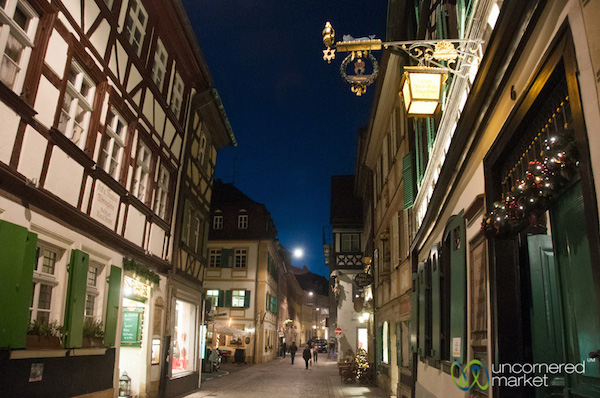
If you wish to visit some of the larger German Christmas markets check out this article with recommendations for Munich, Stuttgart, Nuremberg, Dresden and Berlin.
Getting There
G Adventures runs a number of departures to Germany encompassing a wide range of departure dates and activities to cater for different tastes. We’re thrilled at the prospect of showing you this big blue planet of ours — check out our small group trips here.






























